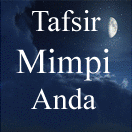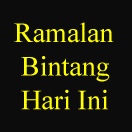The formation, closure, and preservation of back arc basin
sequences has proven to be a popular model for the evolution
of some greenstone belts. Paradoxically, the dominance of
buoyant subduction styles in the Archean should have led to
dominantly compressional arc systems, but many workers
suggest back arc basins (which form in extensional arcs) as a
modern analog for Archean greenstone belts.
Turkic-type accretionary orogens are large, subcontinent
size accretionary complexes built on one or two of the colliding
continents before collision, through which magmatic
arc axes have migrated, and are later displaced by strike-slip
faulting. These accretionary wedges are typically built of
belts of flysch, disrupted flysch, and mélange, and accreted
ophiolites, plateaux, and juvenile island arcs. A. M. Celal
Sengör and Boris Natal (1996) review the geology of several
Phanerozoic and Precambrian orogens and conclude that
Turkic or accretionary-type orogeny is one of the principal
builders of continental crust with time. The record of
Archean granite-greenstone terranes typically shows important
early accretionary phases followed by intrusion by arc magmatism,
possibly related to the migration of magmatic fronts
through large accretionary complexes. In examples like the
Superior Province, many subparallel belts of accreted material
are located between continental fragments that are separated
by many hundreds of kilometers and thus may represent
large accretionary complexes that formed prior to a “Turkictype”
collision. Late-stage strike-slip faulting is important in
these Archean orogens, as in the Altaids and Nipponides, and
may be partly responsible for the complexity and repetition
of belts of similar character across these orogens.
Turkic or accretionary-type of orogeny provides a good
paradigm for continental growth. These orogenic belts possess
very large sutures (up to several hundred kilometers
wide) characterized by subduction-accretion complexes and
arc-derived granitoid intrusions, similar to the Circum-
Pacific accreted terranes (e.g., Alaska, Japan). These subduction-
accretion complexes are composed of tectonically
juxtaposed fragments of island arcs, back arc basins, ocean
islands/plateaux, trench turbidites, and microcontinents.
Turkic or accretionary-type orogens may also experience
late-stage extension associated with gravitational collapse of
the orogen, especially in association with late collisional
events that thicken the crust in the internal parts of the orogen.
In the Archean, slightly higher mantle temperatures
may have reduced the possible height that mountains would
have reached before the strength of deep-seated rocks was
exceeded, so that extensional collapse would have occurred
at crustal thickness lower than those of the younger geological
record. Another important feature of these orogens is
the common occurrence of orogen parallel strike-slip fault
systems, resulting in lateral stacking and bifurcating lithological
domains. In these respects, the accretionary-type
orogeny may be considered as a unified accretionary model
for the growth of the continental crust.
Archean cratons are ubiquitously intruded by late to postkinematic
granitoid plutons, which may play a role in or be
the result of some process that has led to the stabilization or
“cratonization” of these terranes and their preservation as
continental crust. Most cratons also have a thick mantle root
or tectosphere, characterized by a refractory composition
(depleted in a basaltic component), relatively cold temperatures,
high flexural rigidity, and high shear wave velocities.
Outward growth and accretion in granite-greenstone terranes
provides a framework for the successive underplating of
the lower parts of depleted slabs of oceanic lithosphere, particularly
if some of the upper sections of oceanic crust are offscraped
and accreted, to be preserved as greenstone belts, or
eroded to form belts of graywacke turbidites. These underplated
slabs of depleted oceanic lithosphere will be cold and compositionally
buoyant compared with surrounding asthenosphere
(providing that the basalt is offscraped and not subducted and
converted to eclogite) and may contribute to the formation of
cratonic roots. One of the major differences between Archean
and younger accretionary orogens is that Archean subducted
slabs were dominantly buoyant, whereas younger slabs were
not. This may be a result of the changing igneous stratigraphy
of oceanic lithosphere, resulting from a reduction in heat flow
with time, perhaps explaining why Archean cratons have thick
roots and are relatively undeformable compared with their
younger counterparts. Geometric aspects of underplating these
slabs predict that they will trap supra-subduction mantle
wedges of more fertile and hydrated mantle, from which later
generations of basalt can be generated.
Many granites in Archean terranes appear to be associated
with crustal thickening and anatexis during late stages of
collision. However, some late-stage granitoids may be a direct
result of decompressional melting associated with uppercrustal
extensional collapse of Archean orogens thickened
beyond their limit to support thick crustal sections, as determined
by the strength of deep-seated rocks. Decompressional
melting generates basaltic melts from the trapped wedges of
fertile mantle, which intrude and partially melt the lower
crust. The melts assimilate lower crust, become more silicic in
composition, and migrate upward to solidify in the mid to
upper crust, as the late to post-kinematic granitoid suite. In
this model, the tectosphere (or mantle root) becomes less
dense (compositionally buoyant) and colder than surrounding
asthenosphere, making it a stable cratonic root that
shields the crust from further deformation.
Late-stage strike-slip faults that cut many Archean cratons
may also play an important role in craton stabilization.
Specifically the steep shear zones may provide conduits for
massive fluid remobilization and escape from the subcontinental
lithospheric mantle, which would both stabilize the
cratonic roots of the craton and initiate large-scale granite
emplacement into the mid and upper crust.
See also CHINA’S DONGWANZI OPHIOLITE; GREENSTONE
BELTS; OROGEN.

















Tidak ada komentar:
Posting Komentar
Catatan: Hanya anggota dari blog ini yang dapat mengirim komentar.